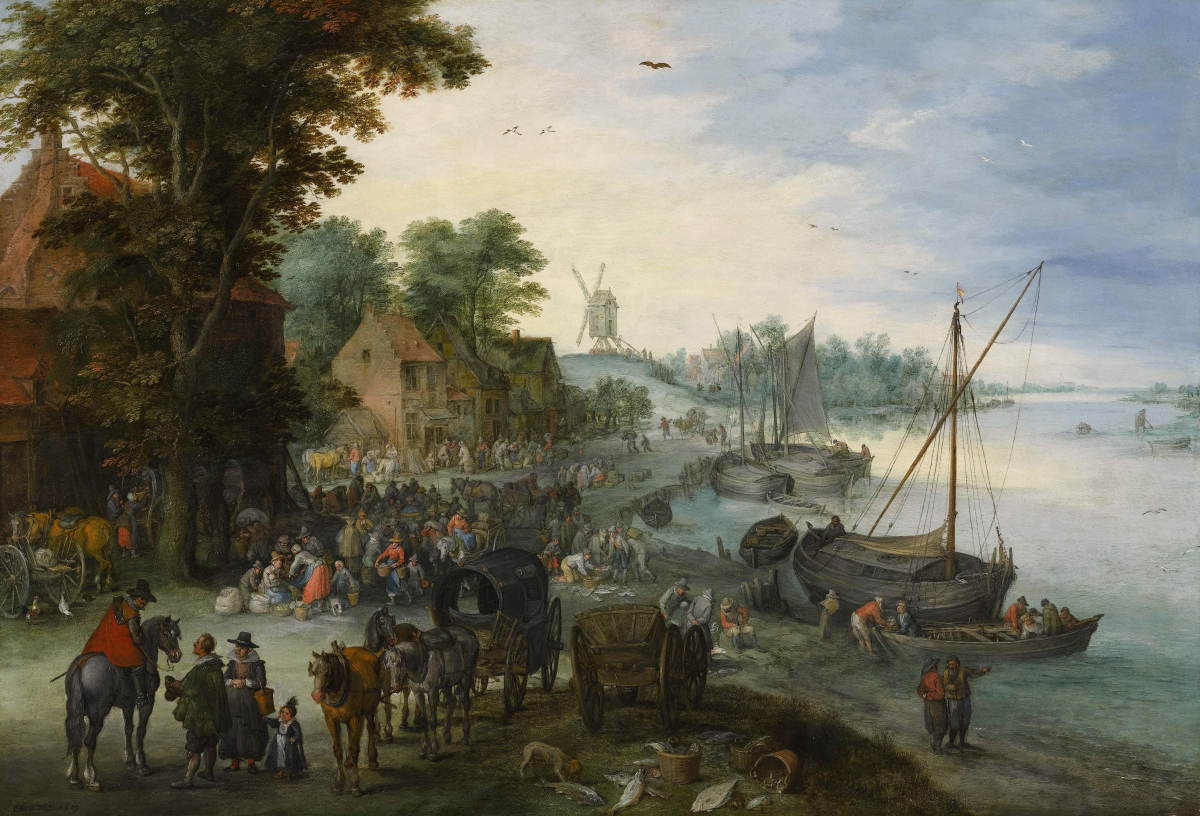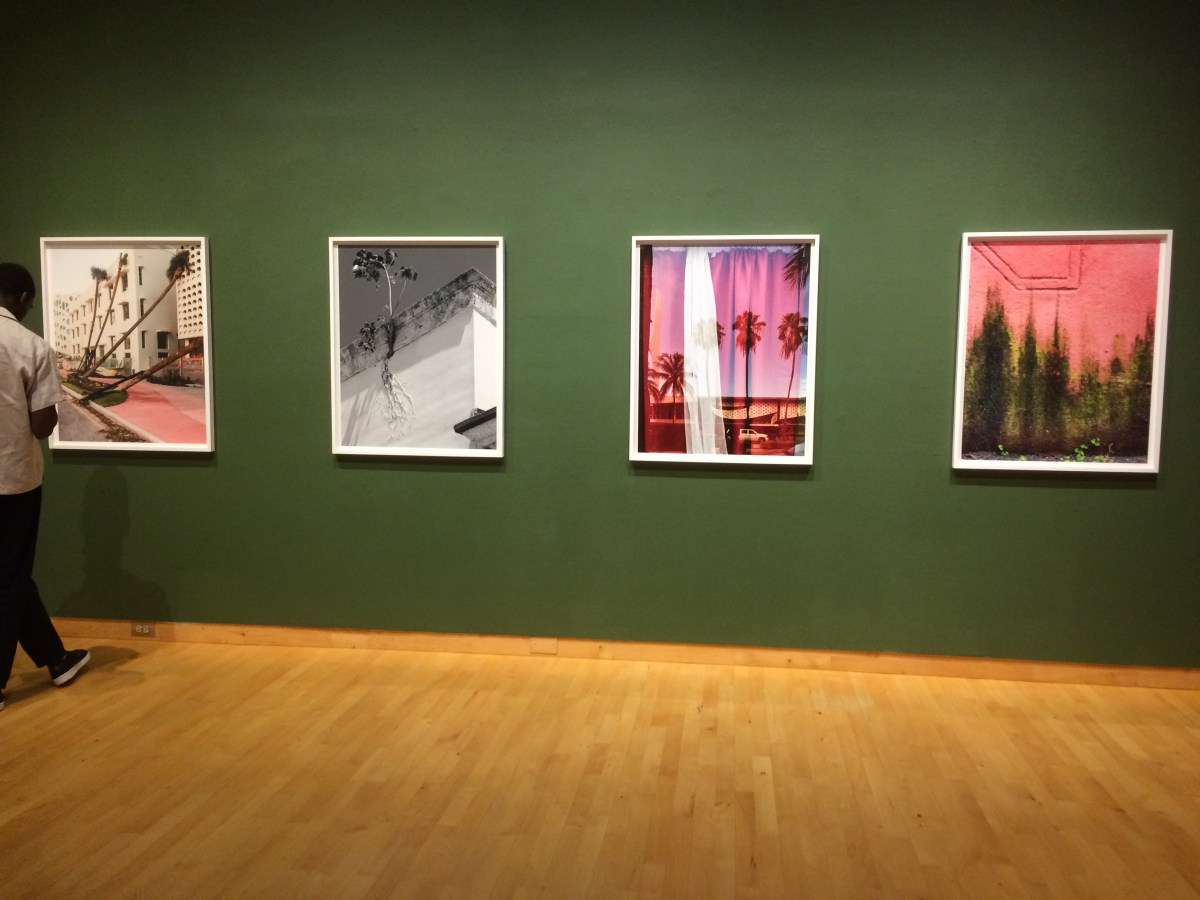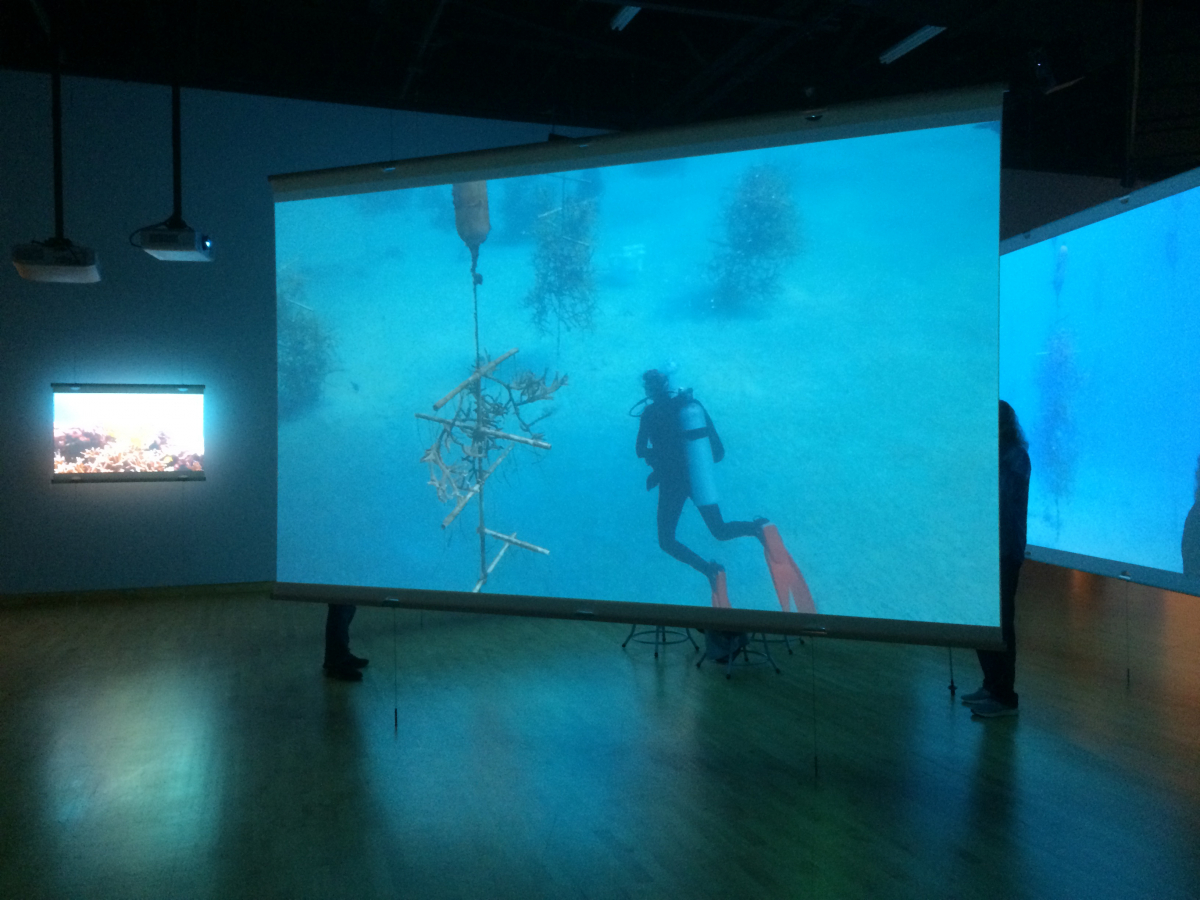
One of the nice things about visiting a museum over the years is the strength and timelessness of the art displayed, as compared to how we evolve as individuals. When we change over time, we bring different references to each new experiences. As a result, our response to culture, visual art, film, music, theater, dance etc. will be transformed over time. Just think about how much your taste in music has changed in your lifetime, from the time you were a pre-teen to where you are now.
With all this said, I return to the Museum of Fine Arts, St Petersburg and find new/old works to study and enjoy. Virginia Cuthbert’s Inner City Industrial Scene (1942) was painted shortly after she arrived in Buffalo, NY. It depicts the view from inside a street level store, looking out the front windows and glass door toward an industrial-looking swath of buildings. The somewhat geometric crumpled up paper and empty box in one window gives the viewer a sense of loss or exodus, as if a business just closed, while the scene outside, which is devoid of any people, enhances the desolate feeling of the entire location. I was immediately thinking of Charles Sheeler, a fellow Precisionist, who too created stunningly mesmerizing scenes like Cuthbert's to indicate a range of starkness or dread in certain aspects of 'modern life', while at the same time, getting us lost in the drama of a line/form dynamic.

Portrait of Fletcher Martin with a German Pistol (1943) by George Biddle is another work that now gets my attention. As noted on the wall text, Biddle was the chairman of the United States War Department’s Art Advisory Committee and Martin, the subject of the painting, was on assignment for Life magazine. Painted when they were both in Tunisia, Biddle captures a quiet moment in an otherwise bucolic setting. The suspense comes in the form of Martin’s dark eyes that are darting to his left, as if to spy some very suspicious movement or activity outside the picture plane. Overall, the exceptionally even quality of the paint application and brushwork, and the scheme of color that emphasizes both nature and camouflage are all quite masterful.
The Church at Montigny, Effect of Sunlight (1908) by Francis Picabia, was painted when the artist was in his late twenties. Executed before he met the likes of Jaques Villon and Marcel Duchamp, Picabia was then influenced by the Impressionists. Done with rather heavy, deliberate vertical, horizontal and an occasional diagonal brushstrokes, Picabia clearly captures the time of day in pinks, blues and purples much in the same way Monet captured it in the Rouen Cathedral series from 1890. In the end, it is always a pleasure to see the works of a great and influential artist before they hit their more ‘well known’ period(s), when you can see their struggle to find themselves, and acceptance, in the art world.

A Wooded River Landscape, With a Fish Market and Fishing Boats (1610) by Jan Brueghel the Elder is a brilliant work that captures the eye initially with its two-thirds bright and one-third dark composition, which is comfortably divided by a curved, ascending meridian. Once you are drawn in, you begin to see the bustling activity of this fishing village, which is immediately followed by a receding narrative -- first, in the form of two dark crimson figures on the right and left of the foreground, then to the slightly washed out, sunlit reds of a few more figures in the early mid ground, to the more faded pinkish tones of select figures in the far ground. In the end you find yourself at the proud windmill, where you realize just how carefully and surely the artist carried your gaze through the intricate depth of this vista.
For the next few months, the Museum of Fine Arts will also feature a number of excellent exhibitions that address a wide range of interests including the Ancient Theater and Cinema, which correlates ancient Greek objects with stills from familiar feature films. Explore the Vaults is another fascinating exhibition that reveals a collection of works on walls and in modified print draws, of a number of prints and photographs that reflect the burgeoning and explorative age of Toulouse-Lautrec. On view through May 10th is Art of the Stage: Picasso to Hockney; and on March 14th, In Full Bloom: Netherlandish Flower Paintings and Trade will be open to the public.

While I was at the Morean Arts Center to open a show I curated titled I Am..., I was able to walk through two one-person exhibitions in the adjacent galleries. The first is Kirk Ke Wang: Landscape of Human Skins. The term "Human Skins" is a metaphor for the used clothing seen at disaster sites. Calling his work "Social Abstraction," Wang focuses our attention on the environment as it relates to catastrophic events, as well as the migration that such tragedies create. In Landscape of Human Skins -- Green Spring (2017) we see a jumble of swirling representations: a fish, a bird, a section of broken chain link fencing and tree roots from a recently logged tree all hovering above what appear to be household items, and we get the immediate sensation of the suddenness of a severe storm and its aftermath.

The next solo show has the work of Perri Neri. The exhibition, Perri Neri: Past Tense; Present, features a number of angst-ridden, predominantly red and blue dynamic figurative paintings plus a few very detailed biomorphic drawings. Seemingly working against the clock as the artist observes the spiraling decline of humanity, Neri reveals some gut-wrenching moments when it all becomes too real and altogether overwhelming.

Crossing the street, my next stop is the Chihuly Collection. Being very familiar with the larger public installations of Dale Chihuly, and having never been to one of the museums that feature his work, I was pleasantly surprised by the many unfamiliar works. Float Boat (2007) consists of several 'glowing' planet like orbs that fill up and are scattered around a rowboat. The overall narrative made me think of some otherworldly, off-site area past the confines of the known universe where planets-in-wait might be held.

Ikebana Drawing on Acrylic (2010), which looks to be dripped, flung, swished and patted acrylic paint on a clear sheet of clear plastic glass that is front and back lit, brings forth the mindset of certain Modernists who favored the no-holds-barred primitive side of expression, while Sliver Gilded Scarlet Piccolo Venetian with Curls (2000) has just the right amount of whimsy.
One gallery at the museum is dedicated to artists who relate in some way to glass. Currently, the duo of Jenny Pohlman and Sabrina Knowles offer In the Light of Winter. Their collaborations, which began some 25 years ago, culminate here in a series of works that embrace many facets of our global culture including personal stories, religion, politics and current affairs. In one instance, with In the Light of Winter, Tapestry (2019), the artists create something like an oversized charm bracelet with chains of glass and metal objects. I am reminded of the work of Esperanza Cortés, who created I.D Bracelet (2013) comprised of frescoes, amulets, glass beads, metal and chain. Lodestar Portrait Series (2017), the one consisting of thirteen circular portraits and birds, is the most powerful piece in the exhibition as it produces a very potent sense of sisterhood, freedom and community.

Jenny Pohlman and Sabrina Knowles, In the Light of Winter, Tapestry (2019)
There are two important exhibitions that just opened at the University of South Florida's Contemporary Art Museum. FloodZone, a solo exhibition by Anastasia Samoylova, consists of numerous large format color and black and white photographs that line the slickly colored walls of an angular gallery. This compelling installation is further enhanced by the addition of images mounted on both sides of freestanding kiosks sporadically placed throughout. My initial impression was one of a challenge, as various, and sometimes confusing messages quickly emerge. However, once engaged, the story of rising sea levels reveals the very strained relationship between "environmentalism, consumerism and the picturesque." If you have not already, after seeing this exhibition, you can not help but wonder seeing all the bustling boulevards and condo laden shorelines of the nearby area, which science-based predictors of future climate change the developers are looking at. It's nature vs. naysayers, as Samoylova brings the undeniable to the disbelievers.

Anastasia Samoylova, Installation view, FloodZone, (left to right) Pink Sidewalk (2017), Painted Roots (2017), South Beach Reflection (2017), Green Mold (2019), archival pigment prints, courtesy of the artist and Dot Fiftyone Gallery, Miami, FL.
A second one-person exhibition is that of Hope Ginsburg. Her multi media installation is titled Sponge Exchange, which consists of three floating screens for video projection, an arcade-like "Coastorama dioramas" of educational discovery displays, and a side room with various photographs and paraphernalia created and accumulated during the lengthy process that lead up to the creation of this exhibition. The concept here is the exploration of "the impacts of the climate crisis on marine species." Working with USF students and professors Maxwell Parker and John Byrd, the exhibition emphasizes the role us humans can play in what amounts to something like reforestation, only this time it is happening in our seas and oceans to rebuild important and structural marine life.

Brava Ginsburg and Samoylova for your hard work, vision and ability to shed much needed light on one of our planets most dire emergencies. Time is running out and it is efforts like these two exhibitions that builds much needed direction and hope.
